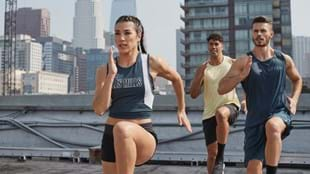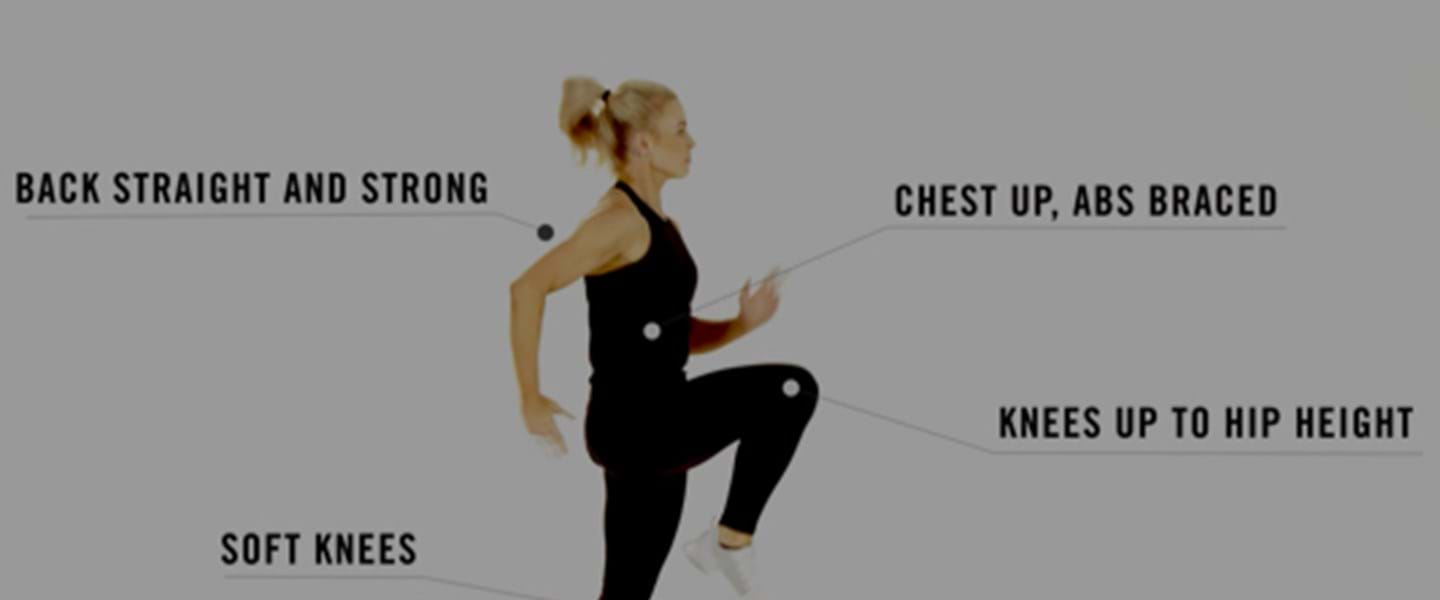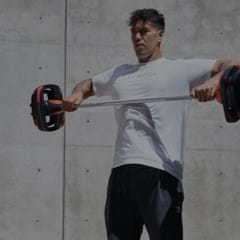High knee running is a great cardio “go-to” because it’s is simple, it doesn’t require much coordination and it can be completed with varying levels of intensity. And, most importantly, when it comes to building cardio fitness it gets results. High knee running will quickly elevate your heart rate into the 75 percent max training zone.
The key to success is to make certain that your knees are consistently being raised to hip height. You want to ensure you keep your back straight, chest up and abs braced, and your knees soft on impact. You can check you’ve got your technique correct below:
THE #1 WAY TO MAXIMIZE RESULTS
The secret to making high knee running more effective is to get your upper body in on the action and pick up a weight plate. Weighted high knee running will swiftly raise your heart rate into the 90 percent maximum training zone as it drastically increases muscle activation…
Les Mills science advisor, Dr Jinger Gottschall, has recently completed heart rate and surface muscle activity tests on ten healthy college students. They performed a 10-minute cycling warm-up of progressive intensity, followed by sets of unweighted high knee runs, high knee runs with a 5kg plate held at collarbone and high knee runs with a 5kg plate held overhead. The variations were performed eight times for 20 seconds with a 60 second break in random order.
Of the eight muscles tested, the muscle activation for six of the muscles was significantly greater during high knee running with a plate at the collarbone compared to high knee running without a plate. When the plate was lifted above the head the muscle activation was greater for all of the muscles tested
The high knee lowdown:
- Compared to high knee running without a plate, anterior deltoid activity was 89 percent greater with a plate at the collarbone and almost 1.5 times greater when the plate was lifted above the head.
- Three-dimensional core activation (which is the anterior, lateral and posterior core muscles) was over 30 percent greater with the plate low and around 50 percent greater with the plate high.
- Activation of the extensor muscles that oppose gravity (quadriceps and gastrocnemius) was over 30 percent greater with the plate low and around 50 percent greater with the plate high.
Keen to get your high knee run fix? Try LES MILLS GRIT.









